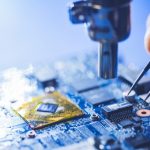Tesla has drawn attention by moving safety monitors to the driver’s seat in its autonomous Robotaxi fleet during select rides. The shift comes as the company extends its Robotaxi ride-hailing service in Austin and the Bay Area, with broader U.S. expansion planned before the year ends. Observers have noted both regulatory pressures and operational caution as possible motives for the change. As questions about public safety and compliance arise, Tesla is adapting its strategy in real time, influencing both rider experience and industry perceptions. Other major cities are expected to see similar approaches as autonomous vehicles continue to enter mainstream transportation.
Similar Robotaxi pilot rollouts by Tesla in earlier years featured human safety monitors positioned in the passenger seat, especially in initial test phases. Knee-jerk assessments often interpreted this as a response to regulatory climates or as a way to monitor new software capabilities directly. However, attention to highway environments has grown as cities increase scrutiny around autonomous driving on high-speed roadways. Past public disclosures emphasized a gradual progression toward fully unsupervised operation. This current move indicates Tesla’s ongoing adjustment of its operational protocols as state laws and public expectations evolve.
What Led to the Shift in Monitor Placement?
Tesla began the Robotaxi service without anyone in the driver’s seat, instead putting monitors in the front passenger seat. As the service’s geographical range and complexity grew, so did the methods for ensuring safety and compliance. Most notably, recent changes in Austin showed safety monitors seated behind the wheel rather than beside riders, especially for journeys including highway segments.
How Is Tesla Explaining Its Current Approach?
The company provided direct clarification through its official Robotaxi social media account, attributing the shift to a precautionary approach targeting highway operations.
“Safety monitors are only in the driver’s seat for trips that involve highway driving, as a self-imposed cautious first step toward expanding to highways,”
the Tesla Robotaxi account posted, drawing a line between in-city and highway usage. Industry watchers and Tesla fans have speculated that compliance with newly enacted Texas legislation for autonomous vehicles might also play a role, though Tesla’s comment frames the move as internal safety protocol.
What Does This Mean for the Expansion of Autonomous Rides?
An increase in operational caution appears aimed at smoothing regulatory approval for further expansion beyond Austin and the Bay Area. While legislation may require heightened oversight in certain scenarios, Tesla suggests these measures are temporary.
“It’s a cautious step as we evaluate highway performance before broader rollout,”
the company stated in discussions with users on social media. The company’s history of measured deployment strategies in new markets—adjusting monitor placement in reaction to local rules—underscores its focus on scaling responsibly.
Tesla’s presence in the autonomous vehicle sector repeatedly prompts questions about regulation, public safety, and the limits of current technology. Incorporating safety monitors—especially in scenarios involving higher speeds and more complex decision-making—addresses concerns raised by policymakers and the public. Companies evaluating similar pilot programs could look to Tesla’s evolving approach as a reference for practical safety procedures, especially as expectations around transparency and operational control rise.
For those interested in the deployment of autonomous fleets, Tesla’s updated protocol signals both a willingness to adapt and an attention to layered safety strategies. The focus on highway travel acknowledges unique risks that differ from urban settings, and demonstrates a blend of regulatory responsiveness and self-initiated caution. Monitoring outcomes from Tesla’s updated Robotaxi pilot may provide key insights for other automakers, transit agencies, and city planners considering autonomous vehicle integration. For consumers, these incremental changes offer a clearer look at how automated transportation services may integrate into daily mobility.
- Tesla moves safety monitors to driver’s seat for highway Robotaxi trips.
- Shift addresses both regulatory and internal safety concerns.
- Other cities may see similar protocols as service expands.










